Categories
- Argentina
- Chile
- Antarctica
- Easter Island
- Falklands (Malvinas)
- Bolivia
- Peru
- Uruguay
- Paraguay
- Brazil
- Venezuela
- Colombia
- Ecuador
- Galapagos
- Panama
- Costa Rica
- Cuba
- Nicaragua
- Honduras
- El Salvador
- Guatemala
- Belize
- Mexico
- Latin American Xmas
Pages
- Street Art of Buenos Aires
- A week in Buenos Aires
- The Jesuit Missions in South America
- Contact Us
- Map of Central America
- First week in Latin America – October 2009
- Home Page
- Map of South America
Archives
- October 2011 (3)
- September 2011 (9)
- August 2011 (10)
- July 2011 (7)
- June 2011 (6)
- May 2011 (11)
- April 2011 (10)
- March 2011 (4)
- February 2011 (5)
- January 2011 (6)
- December 2010 (6)
- November 2010 (4)
- October 2010 (8)
- September 2010 (5)
- August 2010 (7)
- July 2010 (5)
- June 2010 (6)
- May 2010 (6)
- April 2010 (7)
- March 2010 (6)
- February 2010 (9)
- January 2010 (4)
- December 2009 (8)
- November 2009 (5)
- October 2009 (2)
Around Oaxaca
20th July 2011
Three valleys radiating out from Oaxaca [13] are populated by small villages. The best time to visit is on market days when they come alive with bustle and colour.
.
To the south, San Bartolo Coyotepec is known for its shiny black burnished pottery, barro negro, the techniques developed by the late Doña Rosa many years ago. In Cuilapam, the stone ex Dominican monastery of Santiago Apostal dominates the skyline. The Dominicans were converting the indigenous in the area and did so quite quickly, but to reinforce the new faith they built a huge convent with murals depicting Christian beliefs with an indigenous influence. It became so expensive that it was never completed with construction halted in 1570.
.
In the valley east of Oaxaca, the village of Tlacloula holds a large market on Sundays with vendors selling anything from tiny edible insects to yokes for oxen and anything in between. Further away in Mitla, the colonial church was built on the ruins of an ancient Zapotec ceremonial centre. Mitla is unique in the elaborate and intricate mosaic geometric designs that cover its walls. These mosaics are made with small, stone pieces which have been fitted together without the use of mortar. We arrived in town just as their Guelaguetza festivities of dance and music was about to begin. Invited in, we thoroughly enjoyed the show and the pueblo atmosphere helped along as Mezcal was handed out freely and the performers threw gifts to the crowd. There were 2 tourists (us). Teotitlán del Valle is a famous weaving village where brightly coloured blankets and rugs hang in the streets. Traditionally natural dyes such as cochineal and indigo are used.
.
On a hill (Monte Albán or White Mountain) to the south west of Oaxaca City are the ruins of an ancient Zapotec capital. Sitting on a ridge 400 meters above the valley floor, it was the most important Zapotec centre for over 1,000 years from 200 BC. The buildings were once covered in stucco and painted red.
.
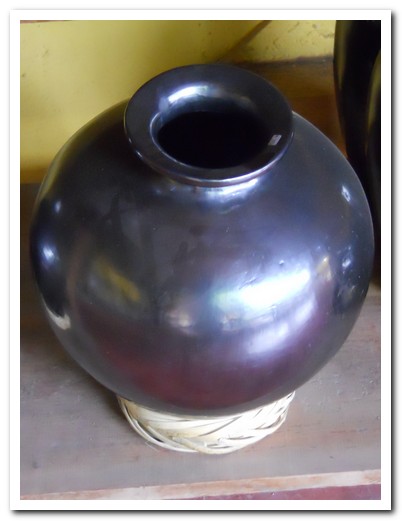
Black pottery from San Bartolo Coyotepec – the process developed by ...
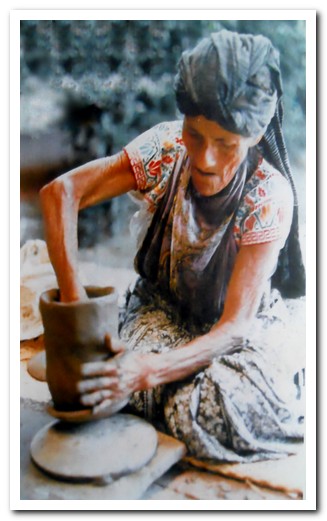
... Doña Rosa many years ago, made on 2 saucers
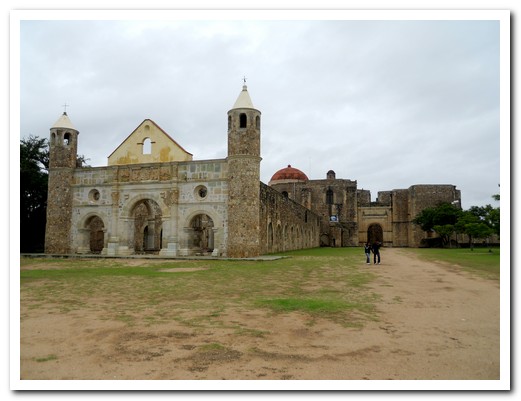
The Dominican Monastery (16th century ) in Cuilapam, was never completed
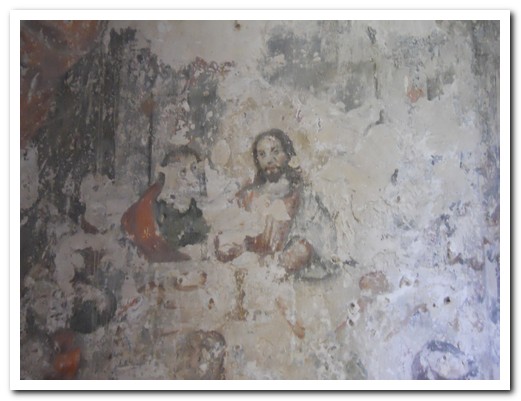
Mural inside the Monastery
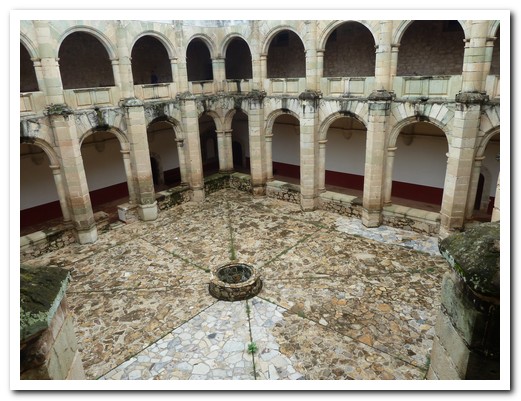
Monastery courtyard

Indigenous depicted in a mural
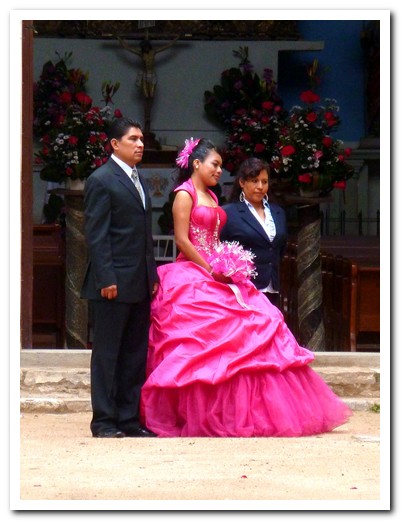
Quinceñera (15th birthday) is an important celebration
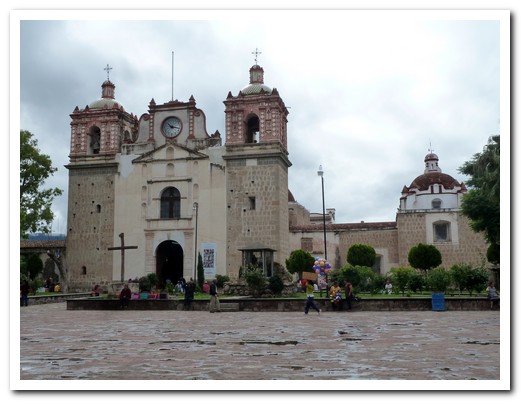
Tlacolula (to the east of Oaxaca) church
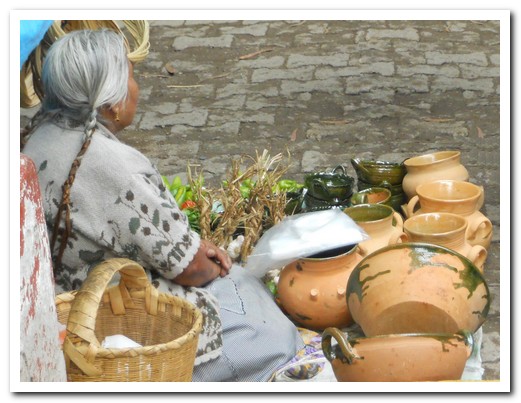
At Tlacolula Sunday market an old lady sells green pottery
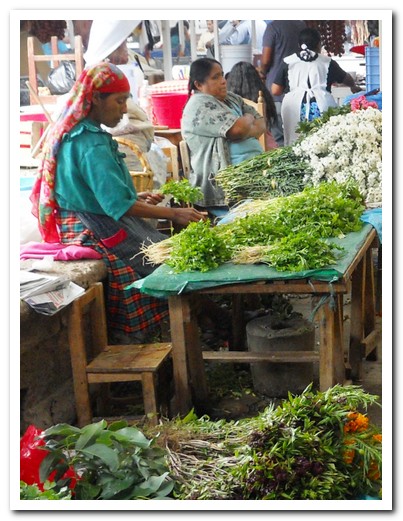
Some ladies wear pretty headscarves
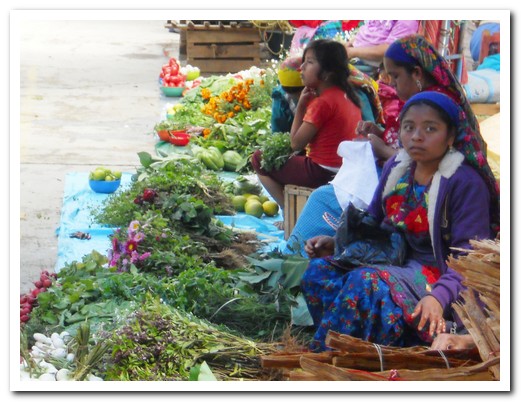
Girls sitting on the floor to sell their produce
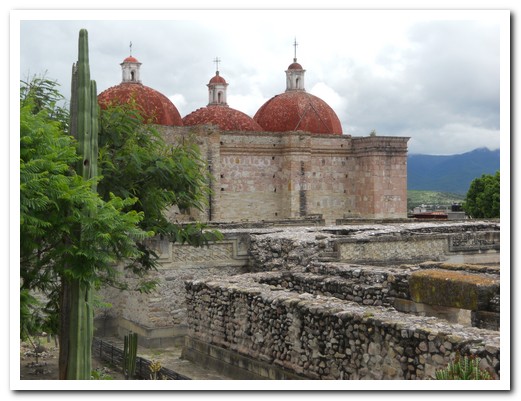
3 domed church at Mitla built over Zapotec ruins
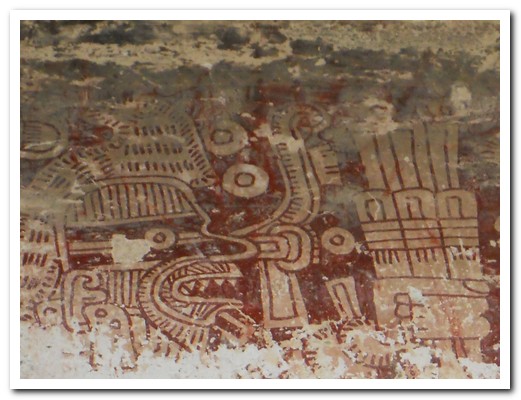
Traces of a fresco from the Zapotec times
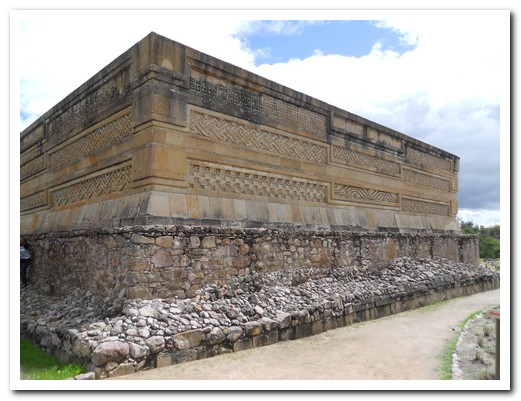
Part of the Zapotec city
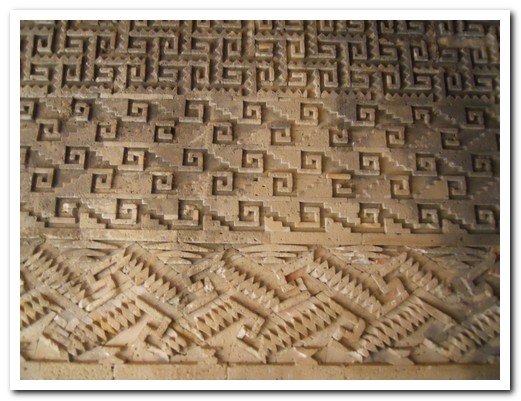
Mosaic patterns are all over the walls
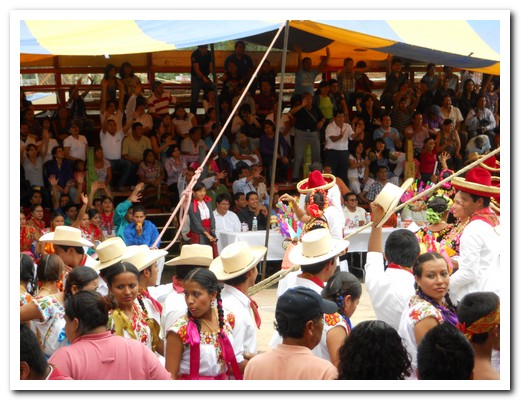
A happy crowd of people at the Guelaguetza in Mitla (festival of dance and music)
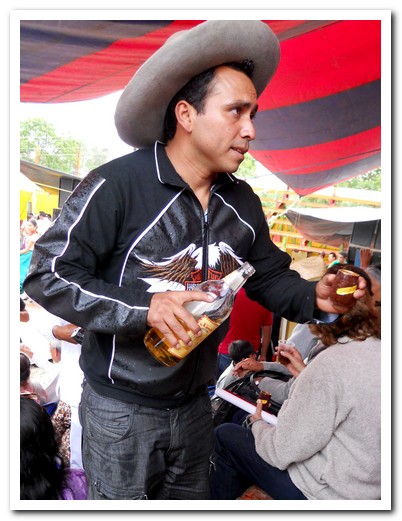
Helped along by a man handing out free Mezcal
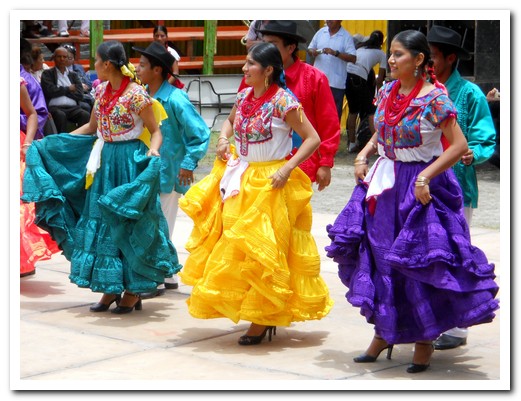
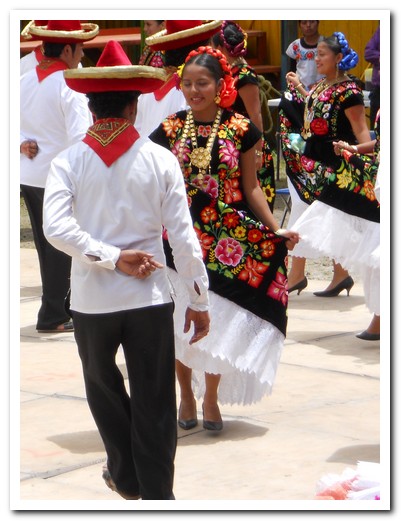
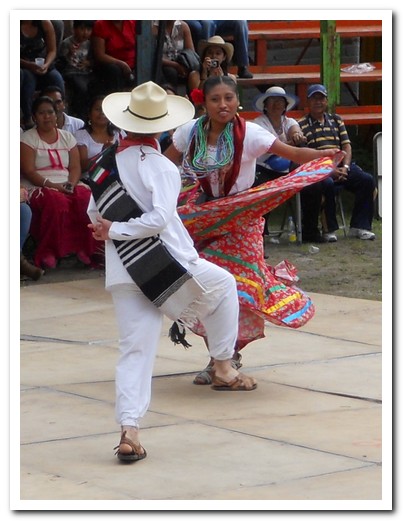
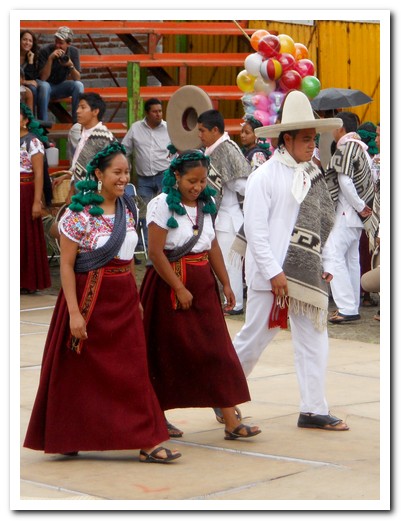
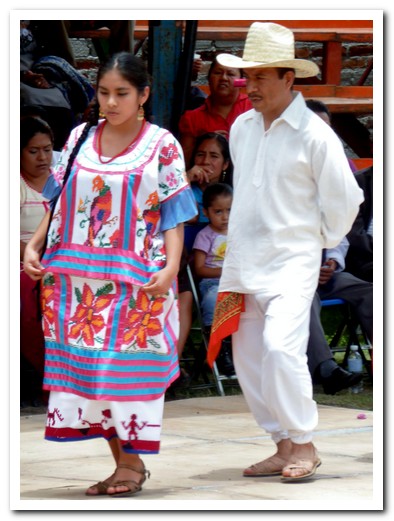
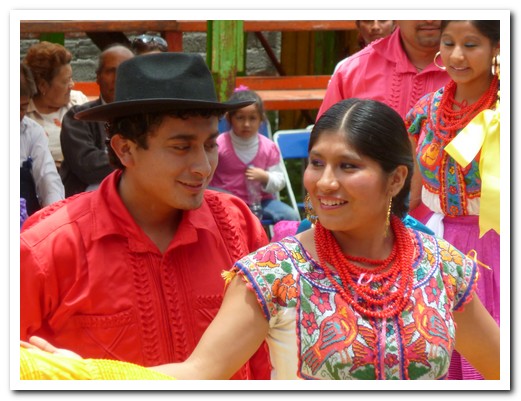
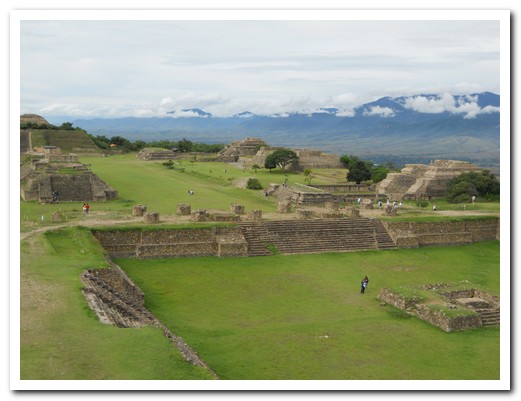
Ancient Zapotec site, Monte Albán
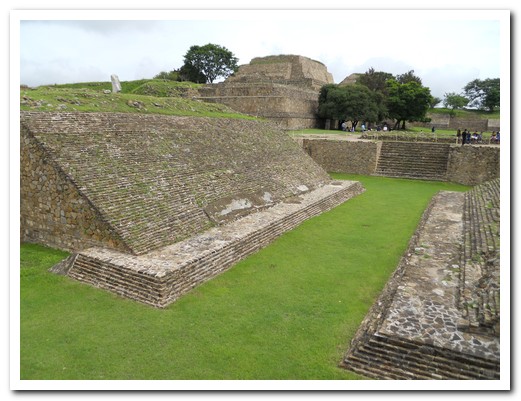
Ball court
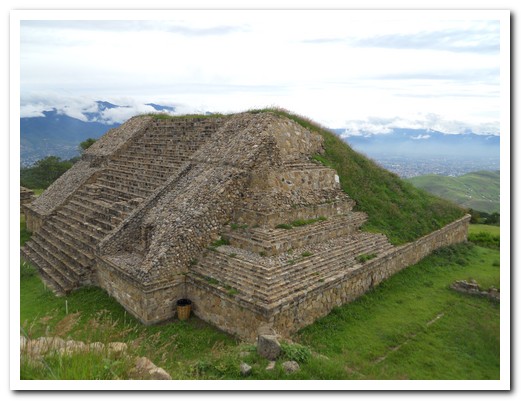
Pyramid
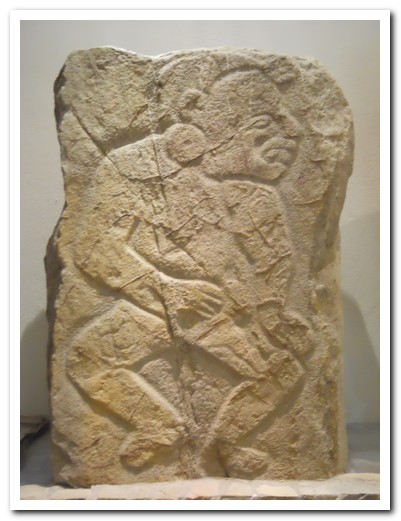
Carved stone panel shows a dancer
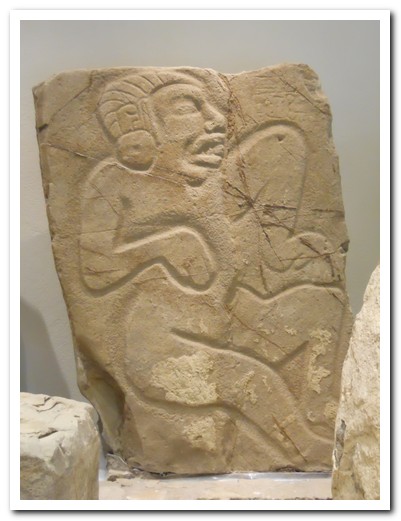
Another dancer
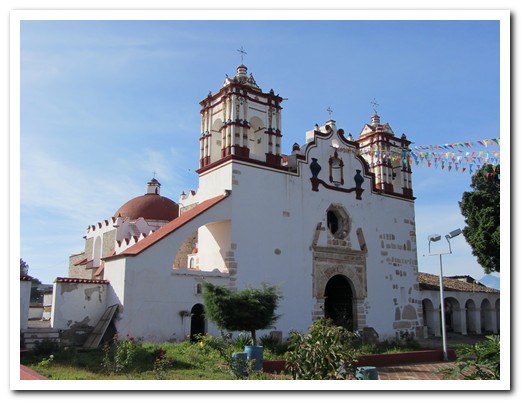
Village church at Teotitlán del Valle
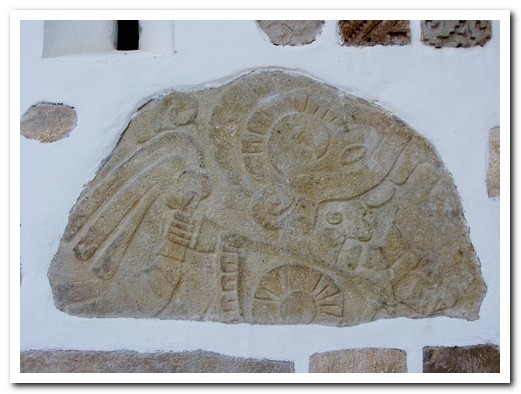
Pre-Hispanic temple stone used in the church
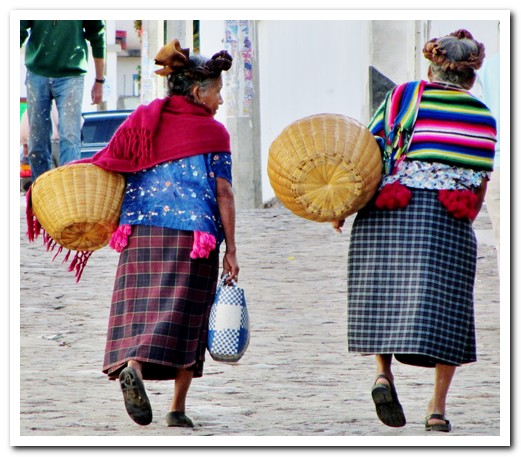
Two old ladies walking to market
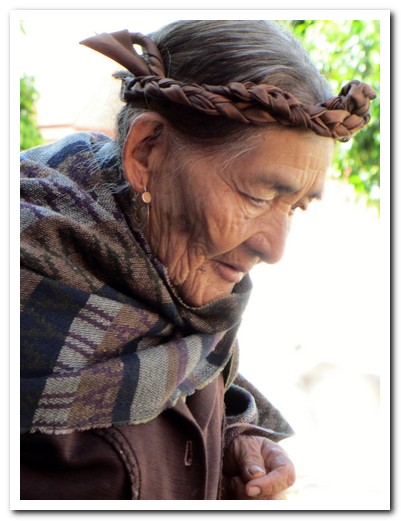
Ribbon braids wrapped around her head
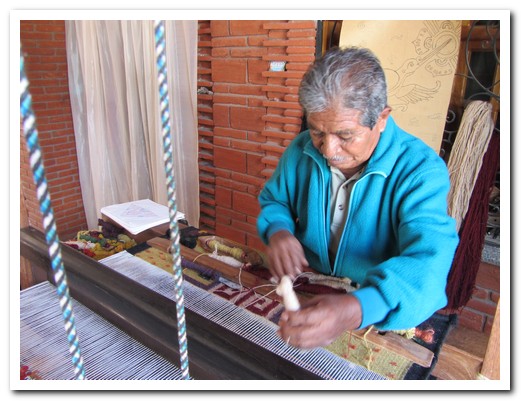
Isaac Vasquez demonstrating rug weaving
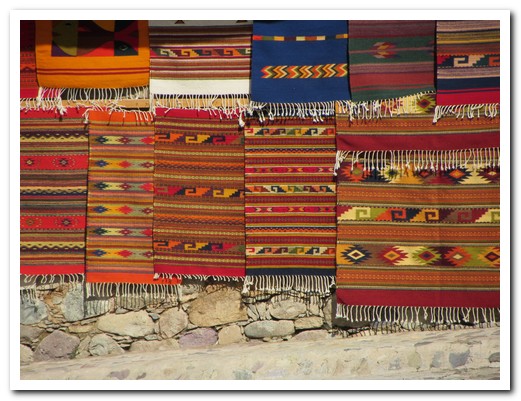
Lovely patterned wool rugs for sale in Teotitlán
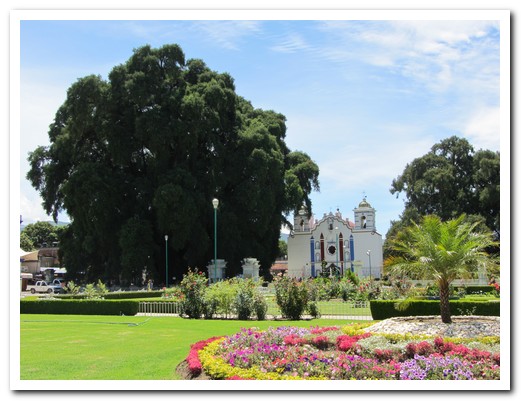
World´s biggest tree (2000 years old) dwarfs the church at El Tule